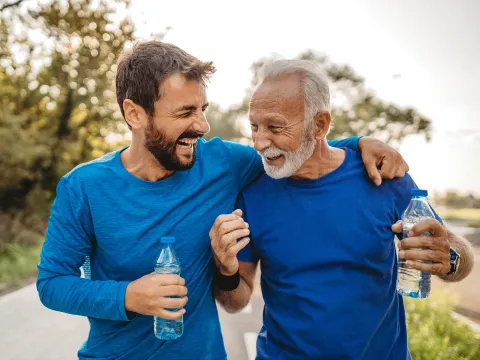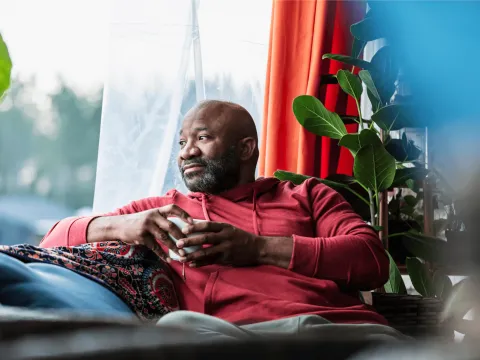- David Marks
Choose the health content that’s right for you, and get it delivered right in your inbox.
We sat down with Dr. Joel Kavan to discuss some important questions related to osteopenia and osteoporosis. Dr. Kavan practices family medicine at our newest primary care practice, AdventHealth Medical Group Primary Care at State Line.
What’s the difference between osteopenia and osteoporosis?
Osteopenia is low bone mass and is not as severe as osteoporosis. Bone mass is often evaluated to screen people at risk for bone fractures. Osteoporotic fractures, especially hip fractures, can lead to significant disability and sometimes death.
What are the main causes of osteopenia?
Most bone mass is acquired during teen years with peak levels by age 30. Underlying medical conditions such as thyroid and parathyroid diseases cause osteopenia and osteoporosis. Smoking and heavy alcohol use also contribute to reduced bone mass.
How is osteopenia diagnosed?
Bone density testing with screening is recommended at age 65 for women or 70 for men with risk factors. This can be done earlier due to bone fractures or increased fracture risk from contributing medical problems or medications.
What is the best treatment for osteopenia?
Healthy diet including adequate calcium and vitamin D intake. Exercise, particularly weight bearing exercise, helps to maintain bone mass and strength. If elevated risk for bone fracture, additional medication is recommended.
What are some ways to help prevent or reduce the effects of osteopenia and osteoporosis?
Maintaining regular weight bearing exercise and healthy diet with adequate calcium, magnesium and vitamin D. Avoid smoking and heavy alcohol use. Routine screening for women at age 65 is recommended.
Why does osteopenia affect more women than men?
Men are at lower risk due to generally larger bones, increased peak mass and slower rate of loss due to hormone differences. As men age, testosterone gradually declines but there is not a sudden loss. Women have a sudden drop in estrogen with menopause increasing risk of bone loss. Women also tend to live longer than men and that contributes to the increased risk of osteoporosis over time.
It's important to speak with your primary care physician about bone health. To find a primary care physician who is right for you, click here.




